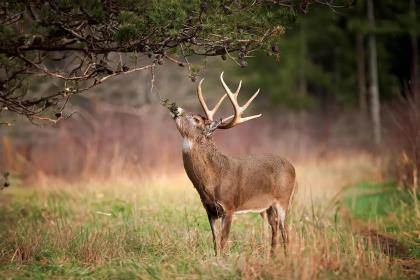“Master the Art of Attracting Deer: Discover Proven Techniques and Strategies to Tempt These Majestic Creatures into Your Space. Unlock the Secrets of Luring Deer with Expert Tips and Create an Enchanting Haven for Wildlife in Your Backyard.”
6 Effective Methods to Attract Deer Without Baiting or Supplemental Feeding

6 Effective Methods to Attract Deer Without Baiting or Supplemental Feeding
1. Calling: Calling is a tried and true method for luring in bucks. However, it requires skill and knowledge of deer vocalizations. Understanding different calls, reading the deer’s body language, and adjusting your tactics accordingly are all essential for successful calling.
2. Rattling: Rattling can also be effective in attracting bucks. The key is to mimic the natural rhythm of buck fights by varying the duration, sound, and volume of your rattling. When done correctly, it can lure bucks within range.
3. Decoying: Setting up a decoy can be especially beneficial for bowhunters. Place the decoy in a strategic position, such as quartering slightly towards you, to entice dominant bucks to approach head-on, offering you an ethical shot opportunity.
4. Fertilizing Natural Vegetation: Deer have cravings and can sense which plants offer more nutrition and taste better. By fertilizing plants and trees in areas frequented by deer, you can enhance their nutritional value and taste, making them more attractive food sources.
5. Food Plots: Establishing strategically placed food plots can attract and hold deer during daylight hours. Pushing food plots closer to bedding areas, creating quality screening cover, and using low-impact hunting strategies can increase their effectiveness.
6. Creating Thick Cover: Deer love heavy cover, so creating thick vegetation through discing, controlled burns, and timber thinning can attract mature bucks to your property. Providing quality food sources and limiting hunting pressure are also important factors in attracting deer.
These methods provide alternatives for attracting bucks without relying on bait or supplemental feeding where prohibited by law. By understanding deer behavior and utilizing their senses against them through calling, rattling, decoying, enhancing natural vegetation, establishing food plots strategically, and creating thick cover, hunters can successfully lure in bucks for trail camera pictures or shot opportunities.
In conclusion, attracting deer to a specific area requires a combination of natural food sources, water availability, and creating a safe and welcoming habitat. Employing tactics such as planting native vegetation, providing salt licks, and minimizing disturbances can significantly increase the chances of attracting deer for observation or hunting purposes. However, it is important to respect local regulations and maintain a balanced ecosystem for the long-term benefit of both deer and other wildlife species.
https://www.youtube.com/watch?v=ybsKnOFmgyI&pp=ygUXaG93IGRvIHlvdSBhdHRyYWN0IGRlZXI%3D








